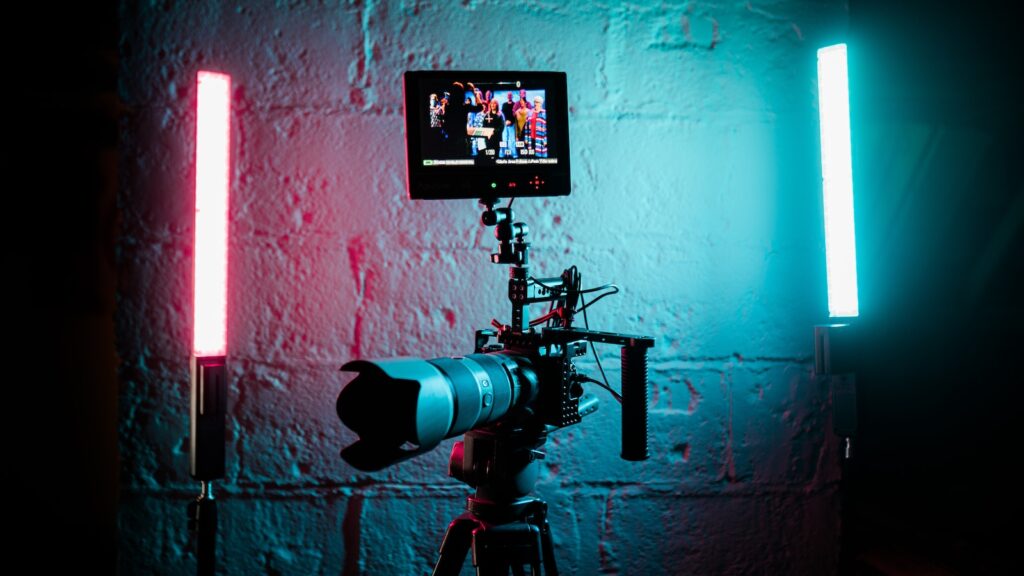In an era where digital content dominates, video advertising has become the frontrunner in capturing audience attention and driving impactful marketing messages. This medium has evolved from simple TV commercials into sophisticated, data-driven digital campaigns. With its proven ability to convey emotion, narrative, and complex information effectively, video advertising is an essential tool in any modern marketer’s arsenal.
This guide explores the full spectrum of video advertising, from its evolution and core types to the technical craft of creating compelling content and measuring its success.
Understanding Video Advertising
The Evolution of Video Advertising
Video advertising has transformed from the one-size-fits-all TV spots of the 20th century to the targeted, interactive digital content of today. The rise of cable TV introduced niche marketing, but the internet—and specifically the advent of broadband and mobile streaming—revolutionized the landscape.
Platforms like YouTube, Facebook, and TikTok became the new hubs for content consumption. This shift ushered in an age of unprecedented customization. Programmatic advertising now allows businesses to target audiences with demographic, behavioral, and psychographic precision. Today’s trend is a blend of personalization, interactivity, and a cross-platform presence, ensuring ads are not just seen but are relevant to the viewer.
Types of Video Advertising
Marketers can utilize several formats to achieve specific objectives. Understanding each type is key to crafting the right strategy.
Linear Video Ads (In-Stream)
These are the most traditional digital video ads, playing before (pre-roll), during (mid-roll), or after (post-roll) the main video content. They are common on platforms like YouTube.
Example: Grammarly Pre-Roll Ad
Non-linear Video Ads
These ads run concurrently with the video content without interrupting it, often as an overlay or a small banner at the bottom of the video. They are less intrusive, offering viewers more control.
Example: Monday.com Non-linear Ad
Companion Ads
These are typically static banners or clickable thumbnails that “accompany” the main video ad, appearing alongside the video player. They provide persistent brand exposure.
Interactive Ads
These ads invite the viewer to participate, moving beyond passive viewing. This can include quizzes, polls, clickable hotspots, or narrative choices, which are highly effective for engagement.
Example: Interactive Ad
Shoppable Video Ads
Transforming ads into storefronts, these allow viewers to purchase products directly from the video. By clicking on a tagged item, viewers are often taken to a product page, significantly shortening the sales funnel.
Example: Shoppable Video Ad
360-Degree Video Ads
Offering an immersive, panoramic experience, these ads allow users to tilt their device or drag their mouse to explore the video’s environment, making them highly memorable.
Example: 360-Degree Video Ad
Crafting Compelling Video Content
Successful video advertising hinges on compelling content. It’s not about selling a product; it’s about telling a story that resonates.
Key Elements of Successful Video Ads
- A Strong Narrative: Effective video ads tell a story. Whether it’s a heartfelt narrative or a humorous problem-solution, the story is what holds engagement.
- Emotional Resonance: Emotions drive action. Tapping into the viewer’s emotions—whether inspiration, humor, or empathy—makes an ad memorable.
- A Clear Call-to-Action (CTA): Every ad should guide the viewer on what to do next (e.g., “Visit Website,” “Shop Now,” “Learn More”).
- High-Quality Production: High-quality visuals and audio build brand trust. This doesn’t require a massive budget, but it does demand clear footage, good lighting, and professional editing.
- Natural Brand Integration: The brand should be integrated seamlessly, not as an afterthought. Logos, brand colors, and products should feel like a natural part of the story.
Technical Aspects of Video Production
- Scripting: A solid script is the blueprint. It outlines dialogue, visual cues, transitions, and text overlays, ensuring the message is cohesive.
- Shooting: This phase requires a deep understanding of composition, lighting, and audio. For a detailed breakdown of this critical stage, see this guide on how to plan a video shoot.
- Editing: This is where the story truly comes together. Editing involves pacing, color grading, sound design, and adding effects to ensure the final video supports the core message.
- Formatting for Platforms: Each platform has different requirements. A vertical 9:16 video for TikTok or Instagram Stories will not work on a 16:9 YouTube player. Always optimize your video for each platform’s native environment. For a complete list, check this social media aspect ratio guide.
Maximizing Reach with Digital Video Advertising
A great video is ineffective if the right audience doesn’t see it. This requires strategic targeting and platform optimization.
Targeting and Personalization
- Understanding Your Audience: Start with a clear definition of your ideal audience. Use demographic, interest, and behavioral data to build a buyer persona.
- Utilizing Targeting Options: Digital platforms offer advanced targeting. You can target users based on location, interests, search history, and recent purchase intent. Google Ads, for example, provides robust tools for reaching specific audience segments.
- Personalization: Tailor your ad creative to different audience segments. A message that speaks directly to a viewer’s specific needs will always outperform a generic one.
Optimizing for Different Platforms
- Understand Platform Specifics: User behavior on LinkedIn (professional, informational) is vastly different from user behavior on TikTok (fast-paced, entertaining). Customize your content to match the platform’s context.
- A/B Testing: Continuously test different ad variations. Experiment with different video lengths, opening hooks, CTAs, and headlines to see what performs best.
A highly effective, specialized format for driving action is the Video Sales Letter (VSL), which combines persuasive copywriting with simple visuals.
Measuring Success in Video Advertising
To refine your strategy and prove ROI, you must track the right metrics.
Key Performance Indicators (KPIs) for Video Advertising
It’s helpful to categorize your KPIs based on your campaign goals (Awareness, Consideration, or Conversion).
- Awareness Metrics:
- View Count: The number of times your video was viewed (definitions vary by platform).
- Engagement Rate: A measure of likes, shares, and comments. This shows that your content is resonating.
- Consideration Metrics:
- Watch Time & View-Through Rate (VTR): How long viewers watch your video. A high VTR (percentage of video watched) is a strong indicator of quality content.
- Click-Through Rate (CTR): The percentage of viewers who click your ad’s CTA.
- Conversion Metrics:
- Conversion Rate: The percentage of viewers who take a desired action after clicking (e.g., make a purchase, sign up for a newsletter).
- Cost Per Click (CPC) / Cost Per View (CPV): These metrics measure the cost-effectiveness of your ad spend.
Leveraging Analytics for Improvement
- Regular Monitoring: Schedule regular check-ins on your ad analytics to identify trends.
- Analyze Viewer Behavior: Use data to understand when viewers drop off. If 70% of viewers leave in the first 3 seconds, your opening hook isn’t working.
- Test and Experiment: Use insights from your analytics to form new hypotheses. Test different thumbnails, titles, or ad copy to continuously improve performance.
Conclusion
Mastering video advertising is an ongoing journey of blending creativity with data. It requires a deep understanding of your audience, a clear strategy for storytelling, and a commitment to measuring what works.
The key to success lies in adapting to the ever-changing digital landscape. By focusing on high-quality, targeted content and leveraging data to refine your strategies, you can capture attention, drive meaningful engagement, and achieve your marketing objectives.





